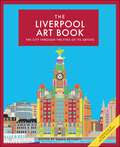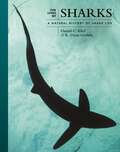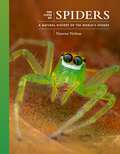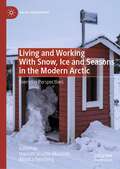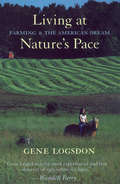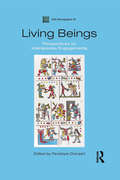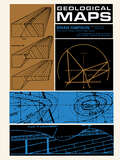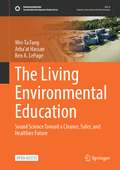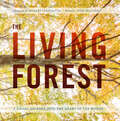- Table View
- List View
Livelihoods, Natural Resources, and Post-Conflict Peacebuilding (Post-Conflict Peacebuilding and Natural Resource Management)
by Helen Young Lisa GoldmanSustaining and strengthening local livelihoods is one of the most fundamental challenges faced by post-conflict countries. By degrading the natural resources that are essential to livelihoods and by significantly hindering access to those resources, conflict can wreak havoc on the ability of war-torn populations to survive and recover. This book explores how natural resource management initiatives in more than twenty countries and territories have supported livelihoods and facilitated post-conflict peacebuilding. Case studies and analyses identify lessons and opportunities for the more effective design of interventions to support the livelihoods that depend on natural resources – from land to agriculture, forestry, fisheries, and protected areas. The book also explores larger questions about how to structure livelihoods assistance as part of a coherent, integrated approach to post-conflict redevelopment. Livelihoods and Natural Resources in Post-Conflict Peacebuilding is part of a global initiative to identify and analyze lessons in post-conflict peacebuilding and natural resource management. The project has generated six books of case studies and analyses, with contributions from practitioners, policy makers, and researchers. Other books in this series address high value resources, land, water, assessing and restoring natural resources, and governance.
The Liverpool Art Book: The city through the eyes of its artists (The city through the eyes of its artists #4)
by Emma BennettA colourful tribute to one of the UK's most iconic cities with a foreword by Sir Paul McCartney.With its historic port and unique docks next to the mighty river Mersey, Liverpool enchants tourists and locals alike. Its bustling music scene, past and present, defines the city. Pictures of The Beatles and Cilla Black, stars of the 60's, quickly turn a pub visit into a trip down memory lane.The city's vibrancy shines through every page of drawings, illustrations and paintings. They take us to Liverpool's grand cathedral and characteristic waterfront, up St Johns Beacon, the city's radio and observation tower, into quirky antique shops and busy pubs. Liverpool's very own artists highlight the city's personality so uniquely, that it will inspire visits to all its secret corners.
The Lives of Bees: A Natural History of Our Planet's Bee Life (The Lives of the Natural World #9)
by Dr. Christina Grozinger Dr. Harland PatchA beautifully illustrated guide to the vibrant and richly diverse world of beesThe Lives of Bees provides a one-of-a-kind look at the life and natural history of bees. Blending stunning photographs and illustrations with illuminating profiles of selected species, this incisive guide takes readers inside the world of these marvelous insects, exploring their physiology, behavior, ecology, evolution, and much more. The Lives of Bees is essential reading for nature lovers everywhere.Features a wealth of stunning color imagesCovers everything from the social lives of bees to their conservationWritten by two leading experts in the fieldDiscusses the cultural, ecological, and economic interconnections between humans and beesHighlights strategies to support bee populations in backyards, farms, and natural areas
The Lives of Butterflies: A Natural History of Our Planet's Butterfly Life (The Lives of the Natural World #6)
by David G. James Dr David J. LohmanA beautifully illustrated introduction to the lives of butterflies around the worldThere are more than fifteen thousand butterfly species in the world, fluttering through a wide variety of habitats. Bright and beautiful, butterflies also have fascinating life histories and play an important role in our planet’s ecosystems. The Lives of Butterflies showcases the extraordinary range of colors and patterns of the world’s butterflies while exploring their life histories, behavior, habitats and resources, populations, seasonality, defense and natural enemies, and threats and conservation.With remarkable photography, graphic illustration, and profiles of thirty-five selected species, this comprehensive and inviting book discusses dozens of key topics, including eggs, caterpillars, and chrysalids; flight, feeding, courtship, and mating; migration and hibernation; concealment, mimicry, and predators; habitat loss and fragmentation, climate change, and pesticides; and farming and gardening to support and attract butterflies.With its stunning illustrations and clear, up-to-date, and authoritative text, The Lives of Butterflies will appeal to a wide range of butterfly and nature lovers.
The Lives of Fungi: A Natural History of Our Planet's Decomposers (The Lives of the Natural World #2)
by Britt BunyardA fascinating and richly illustrated exploration of the natural history of fungiWe know fungi are important, for us as well as the environment. But how they live, and what they can do, remains mysterious and surprising. Filled with stunning photographs, The Lives of Fungi presents an inside look into their hidden and extraordinary world.The wonders of fungi are myriad: a mushroom poking up through leaf litter literally overnight, or the sensational hit of umami from truffle shavings. Alexander Fleming cured infections with mold and spiritual guides have long used psychedelic mushrooms to enhance understanding. Then there are the tiny threads of fungi, called hyphae, that create a communications network for the natural world while decomposing organic matter. Combining engaging and accessible text with beautiful images, The Lives of Fungi lays out all the essential facts about fungi for the mycologically curious.
The Lives of Leaves: 50 Leaves, What they Mean, and What They Mean to Us
by Dan Crowley Douglas JusticeA beautifully illustrated and curated compendium of leaves from around the world. Organised by leaf shape, it tells the stories, science and history of that leaf, from sugar maple and how leaves turn red, to gingko and how leaves are used as medicine.Full of fascinating science and very accessible - The Lives of Leaves is the perfect companion for readers who appreciate, or are waking up to, the wonder of nature, and who want to get to know it better.
The Lives of Lichens: A Natural History (The Lives of the Natural World #10)
by Robert Lücking Toby SpribilleA richly illustrated guide to lichens and their biologyExisting at the margins of life, lichens are the result of symbiotic relationships between fungi and photosynthesizing partners in the form of algae or cyanobacteria. Comprising more than twenty thousand species, lichens are pioneers in diverse ecosystems, colonizing virtually any surface and growing at almost any altitude. Found in rainforests, polar regions, deserts, and your backyard, lichens embody a paradox of toughness and sensitivity, surviving trips to space yet endangered by even the slightest environmental changes from industrial pollution here on Earth. Lichens grow everywhere, but only on their own terms: no one has ever fully assembled a lichen in the lab from its component parts. The Lives of Lichens explores all facets of these peculiar organisms, blending stunning macrophotography and graphics with in-depth coverage of profiled species to provide an unforgettable tour of the marvelous world of lichens.Features a wealth of color illustrationsCovers symbiosis, biology, architecture, evolution, taxonomy, and much moreProvides an up-close look at lichens in their ecosystemsDiscusses human relationships with lichensEssential reading for nature lovers everywhere
The Lives of Octopuses and Their Relatives: A Natural History of Cephalopods (The Lives of the Natural World #8)
by Danna StaafAn engaging and beautifully illustrated introduction to some of the world’s most interesting and charismatic marine creaturesDive deep into the fascinating world of cephalopods—octopuses, squid, cuttlefish, and the mysterious nautilus—to discover the astonishing diversity of this unique group of intelligent invertebrates and their many roles in the marine ecosystem. Organized by marine habitat, this book features an extraordinary range of these clever and colorful creatures from around the world and explores their life cycles, behavior, adaptations, ecology, links to humans, and much more. With stunning photographs and illustrations as well as profiles of selected species, The Lives of Octopuses and Their Relatives is a comprehensive, authoritative, and inviting introduction to the natural history of these charismatic creatures.
The Lives of Seaweeds: A Natural History of Our Planet's Seaweeds and Other Algae (The Lives of the Natural World #4)
by Julie A. PhillipsAn engaging and richly illustrated exploration of the natural history of seaweeds and other algaeAs photosynthetic organisms, seaweeds and other algae transfer billions of tons of carbon globally from the atmosphere to the deep ocean each year. Coming in all manner of colors, shapes, and sizes, from bioluminescent single-celled algae to giant kelps, they form the basis of most marine food webs, and are found in almost all environments on the planet. Touted as the biofuel of the future, seaweeds and algae also hold promise for biodegradable packaging, offer a nutritious food source, and exhibit antiviral and antitumor properties.Combining accessible text with stunning images and graphics, this book takes a deep dive to explore the unique characteristics of seaweeds and other algae, outlining their extraordinary evolution as well as their morphology, life histories, ecology, and uses. Offering rare insights into the algal world, The Lives of Seaweeds is essential reading for naturalists and marine life enthusiasts.
The Lives of Sharks: A Natural History of Shark Life (The Lives of the Natural World #7)
by Daniel C. Abel Dr. R. Dean GrubbsA richly illustrated and comprehensive introduction to the world’s sharksSharks are the top predators in many marine ecosystems. But tales of the killer instincts and fearsomely sharp senses of these hunters can obscure their full life histories. In fact, sharks are characterful, exhibit surprisingly complex behaviors, and lead secretive lives full of interest in every type of marine habitat. The Lives of Sharks is a fascinating and beautifully illustrated guide to these iconic marine creatures from two world-renowned experts. This book explores shark physiology, anatomy, behavior, ecology, and evolution, as well as conservation and the impact of human activity on shark populations. With stunning photographs and illustrations, as well as profiles of selected species, this is a comprehensive, authoritative, and inviting introduction to global shark life today.
The Lives of Spiders: A Natural History of the World's Spiders (The Lives of the Natural World #11)
by Dr. Ximena NelsonA beautifully illustrated guide to the natural history and breathtaking diversity of spiders around the worldSpiders are dominant predators in virtually every terrestrial ecosystem on the planet. A marvel of evolution with species numbering in the tens of thousands, they have been walking the earth since before the dinosaurs. Spiders manipulate the silk strands of their webs to act as a sensory field, which vibrates across wide frequencies that they can read in detail, while young spiders spin silk lines that interact with the electrical fields in the atmosphere, enabling them to balloon across huge distances. Some spiders even gather in groups to impersonate ants in astonishing displays of collective mimicry. The Lives of Spiders explores these and other wonders, blending stunning imagery, lively writing, and the latest science to explore the natural history of the world&’s diverse arachnid life.Features a wealth of color illustrationsSheds invaluable light on the life history, ecology, and stunning diversity of spidersCovers silk and web building, venoms, predators and prey, mating and dancing, spider cognition, and much moreDiscusses the impacts of human activity on spiders
Lives of Weeds: Opportunism, Resistance, Folly
by John CardinaLives of Weeds explores the tangled history of weeds and their relationship to humans. Through eight interwoven stories, John Cardina offers a fresh perspective on how these tenacious plants came about, why they are both inevitable and essential, and how their ecological success is ensured by determined efforts to eradicate them. Linking botany, history, ecology, and evolutionary biology to the social dimensions of humanity's ancient struggle with feral flora, Cardina shows how weeds have shaped—and are shaped by—the way we live in the natural world. Weeds and attempts to control them drove nomads toward settled communities, encouraged social stratification, caused environmental disruptions, and have motivated the development of GMO crops. They have snared us in social inequality and economic instability, infested social norms of suburbia, caused rage in the American heartland, and played a part in perpetuating pesticide use worldwide. Lives of Weeds reveals how the technologies directed against weeds underlie ethical questions about agriculture and the environment, and leaves readers with a deeper understanding of how the weeds around us are entangled in our daily choices.
Living and Working With Snow, Ice and Seasons in the Modern Arctic: Everyday Perspectives (Arctic Encounters)
by Hannah Strauss-Mazzullo Monica TennbergThis book describes everyday practices of life in changing Arctic winter conditions. The authors explore the contemporary and situated outdoor practices in different work settings in Finnish Lapland and investigate how, for example, tourism, reindeer herding, cattle breeding and urban snow management adapt to the physically limiting or enabling features of cold temperatures, snow and ice. The book also highlights individual and societal adjustments to such harsh conditions and their seasonal changes in mobility, including winter cycling, use of snow mobiles and walking with studded shoes. The impact of a warming climate is a great concern for those utilising the enabling qualities of winter weather. The need, then, for continuous adaptation in everyday practices of work and mobility will increase in the future.
Living at Nature's Pace: Farming and the American Dream
by Wendell Berry Gene LogsdonFor decades, Logsdon and his family have run a viable family farm. Along the way, he has become a widely influential journalist and social critic, documenting in hundreds of essays for national and regional magazines the crisis in conventional agri-business and the boundless potential for new forms of farming that reconcile tradition with ecology. Logsdon reminds us that healthy and economical agriculture must work "at nature's pace," instead of trying to impose an industrial order on the natural world. Foreseeing a future with "more farmers, not fewer," he looks for workable models among the Amish, among his lifelong neighbors in Ohio, and among resourceful urban gardeners and a new generation of defiantly unorthodox organic growers creating an innovative farmers-market economy in every region of the country. Nature knows how to grow plants and raise animals; it is human beings who are in danger of losing this age-old expertise, substituting chemical additives and artificial technologies for the traditional virtues of fertility, artistry, and knowledge of natural processes. This new edition of Logsdon's important collection of essays and articles (first published by Pantheon in 1993) contains six new chapters taking stock of American farm life at this turn of the century.
Living Beings: Perspectives on Interspecies Engagements (ASA Monographs)
by Penelope DransartLiving Beings examines the vital characteristics of social interactions between living beings, including humans, other animals and trees.Many discussions of such relationships highlight the exceptional qualities of the human members of the category, insisting for instance on their religious beliefs or creativity. In contrast, the international case studies in this volume dissect views based on hierarchical oppositions between human and other living beings. Although human practices may sometimes appear to exist in a realm beyond nature, they are nevertheless subject to the pull of natural forces. These forces may be brought into prominence through a consideration of the interactions between human beings and other inhabitants of the natural world.The interplay in this book between social anthropologists, philosophers and artists cuts across species divisions to examine the experiential dimensions of interspecies engagements. In ethnographically and/or historically contextualized chapters, contributors examine the juxtaposition of human and other living beings in the light of themes such as wildlife safaris, violence, difference, mimicry, simulation, spiritual renewal, dress and language.
Living Beings: Perspectives on Interspecies Engagements (ASA Monographs)
by Penelope DransartLiving Beings examines the vital characteristics of social interactions between living beings, including humans, other animals and trees.Many discussions of such relationships highlight the exceptional qualities of the human members of the category, insisting for instance on their religious beliefs or creativity. In contrast, the international case studies in this volume dissect views based on hierarchical oppositions between human and other living beings. Although human practices may sometimes appear to exist in a realm beyond nature, they are nevertheless subject to the pull of natural forces. These forces may be brought into prominence through a consideration of the interactions between human beings and other inhabitants of the natural world.The interplay in this book between social anthropologists, philosophers and artists cuts across species divisions to examine the experiential dimensions of interspecies engagements. In ethnographically and/or historically contextualized chapters, contributors examine the juxtaposition of human and other living beings in the light of themes such as wildlife safaris, violence, difference, mimicry, simulation, spiritual renewal, dress and language.
Living Cities: A Case for Urbanism and Guidelines for Re-urbanization
by Jan TangheThis book aims to demonstrate the new awareness concerning the urban environment in Europe. The authors believe that the unlimited outward expansion of our cities must be halted and that we should strive for "inner growth" within urban centres, and for a more human approach to city development. Contact between city dwellers should be encouraged to reduce the isolation of those living in sprawling communities and to remedy the evils resulting from the dispersion of urban functions. To achieve this the book puts forward a number of planning and design criteria which would solve more satisfactorily the problems of housing and living conditions in cities.
Living Death in Early Modern Drama (ISSN)
by James AlsopThis book explores historical, socio-political, and metatheatrical readings of a whole host of dying bodies and risen corpses, each part of a long tradition of living death on stage.Just as zombies, ghouls, and the undead in modern media often stand in for present-day concerns, early modern writers frequently imagined living death in complex ways that allowed them to address contemporary anxieties. These include fresh bleeding bodies (and body parts), ghostly Lord Mayors, and dying characters who must carefully choose their last words – or have those words chosen for them by the living. As well as offering fresh interpretations of well-known plays such as Middleton’s The Lady’s Tragedy and Webster’s The White Devil, this innovative study also sheds light on less well-known works such as the anonymous The Tragedy of Locrine, Marston’s Antonio’s Revenge, and Munday’s mayoral pageants Chruso-thriambos and Chrysanaleia. The author demonstrates that wherever characters in early modern drama appear to straddle the line between this world and the next, it is rarely a simple matter of life and death.This book will be of great interest to students, scholars, and practitioners in theatre and performance studies, and cultural and social studies.
Living Death in Early Modern Drama (ISSN)
by James AlsopThis book explores historical, socio-political, and metatheatrical readings of a whole host of dying bodies and risen corpses, each part of a long tradition of living death on stage.Just as zombies, ghouls, and the undead in modern media often stand in for present-day concerns, early modern writers frequently imagined living death in complex ways that allowed them to address contemporary anxieties. These include fresh bleeding bodies (and body parts), ghostly Lord Mayors, and dying characters who must carefully choose their last words – or have those words chosen for them by the living. As well as offering fresh interpretations of well-known plays such as Middleton’s The Lady’s Tragedy and Webster’s The White Devil, this innovative study also sheds light on less well-known works such as the anonymous The Tragedy of Locrine, Marston’s Antonio’s Revenge, and Munday’s mayoral pageants Chruso-thriambos and Chrysanaleia. The author demonstrates that wherever characters in early modern drama appear to straddle the line between this world and the next, it is rarely a simple matter of life and death.This book will be of great interest to students, scholars, and practitioners in theatre and performance studies, and cultural and social studies.
Living Detroit: Environmental Activism in an Age of Urban Crisis (Routledge Equity, Justice and the Sustainable City series)
by Brandon M. WardIn Living Detroit, Brandon M. Ward argues that environmentalism in postwar Detroit responded to anxieties over the urban crisis, deindustrialization, and the fate of the city. Tying the diverse stories of environmental activism and politics together is the shared assumption environmental activism could improve their quality of life. Detroit, Michigan, was once the capital of industrial prosperity and the beacon of the American Dream. It has since endured decades of deindustrialization, population loss, and physical decay – in short, it has become the poster child for the urban crisis. This is not a place in which one would expect to discover a history of vibrant expressions of environmentalism; however, in the post-World War II era, while suburban, middle-class homeowners organized into a potent force to protect the natural settings of their communities, in the working-class industrial cities and in the inner city, Detroiters were equally driven by the impulse to conserve their neighborhoods and create a more livable city, pushing back against the forces of deindustrialization and urban crisis. Living Detroit juxtaposes two vibrant and growing fields of American history which often talk past each other: environmentalism and the urban crisis. By putting the two subjects into conversation, we gain a richer understanding of the development of environmental activism and politics after World War II and its relationship to the crisis of America’s cities. This book will be of great interest to students and scholars in environmental, urban, and labor history.
Living Detroit: Environmental Activism in an Age of Urban Crisis (Routledge Equity, Justice and the Sustainable City series)
by Brandon M. WardIn Living Detroit, Brandon M. Ward argues that environmentalism in postwar Detroit responded to anxieties over the urban crisis, deindustrialization, and the fate of the city. Tying the diverse stories of environmental activism and politics together is the shared assumption environmental activism could improve their quality of life. Detroit, Michigan, was once the capital of industrial prosperity and the beacon of the American Dream. It has since endured decades of deindustrialization, population loss, and physical decay – in short, it has become the poster child for the urban crisis. This is not a place in which one would expect to discover a history of vibrant expressions of environmentalism; however, in the post-World War II era, while suburban, middle-class homeowners organized into a potent force to protect the natural settings of their communities, in the working-class industrial cities and in the inner city, Detroiters were equally driven by the impulse to conserve their neighborhoods and create a more livable city, pushing back against the forces of deindustrialization and urban crisis. Living Detroit juxtaposes two vibrant and growing fields of American history which often talk past each other: environmentalism and the urban crisis. By putting the two subjects into conversation, we gain a richer understanding of the development of environmental activism and politics after World War II and its relationship to the crisis of America’s cities. This book will be of great interest to students and scholars in environmental, urban, and labor history.
The Living Environmental Education: Sound Science Toward a Cleaner, Safer, and Healthier Future (Sustainable Development Goals Series)
by Wei-Ta Fang Arba'at Hassan Ben A. LePageThis open access book is designed and written to bridge the gap on the critical issues identified in environmental education programs in Asian countries. The world and its environments are changing rapidly, and the public may have difficulty keeping up and understanding how these changes will affect our way of life. The authors discuss various topics and case studies from an Asian perspective, but the content, messaging, and lessons learned need not be limited to Asian cultures. Each chapter provides a summary of the intensive research that has been performed on pro-environmental behaviors, the experience of people working in industry and at home, and their philosophies that guide them in their daily lives. We highlight humanity’s potential to contribute to Sustainable Development Goals (SDGs) by understanding better the environmental psychology, social inclusion, and environmental sustainability and stewardship protection elements that contribute to responsible environmental citizenship. The content of the chapters in this book includes a discussion of the crucial issues, plans, and evaluations for sustainability theories, practices, and actions with a proposed management structure for maximizing the cultural, social, and ecological diversity of Asian experiences compared to other theories and cultures internationally. We intend that the data in this book will provide a comprehensive guide for students, professors, practitioners, and entrepreneurs of environmental education and its related disciplines using case studies that demonstrate the relationship between the social and behavioral sciences and environmental leadership and sustainability.
The Living Forest: A Visual Journey Into the Heart of the Woods
by Robert Llewellyn Joan MaloofIn a winning combination of fine-art photography and short, lyrical essays, The Living Forest reveals the top-to-bottom mystery, beauty, and interconnectedness of the forest.
Living in a Low-Carbon Society in 2050 (Energy, Climate and the Environment)
by Horace HerringCombining theory, case studies and speculative fiction, a range of contributors, from leading UK academics to pioneering renewable activists, create a compelling picture of the potential perks and pitfalls of a low carbon future.
Living in a Tree: Independent Reading Non-Fiction Pink 1a (Reading Champion #515)
by Jackie WalterThis book is part of Reading Champion, a series carefully linked to book bands to encourage independent reading skills, developed with UCL Institute of Education (IOE)Living in a Tree is a non-fiction text exploring the different animals that live in trees. The repeated sentence structure offers readers the opportunity for a very first independent reading experience with the support of the illustrations.Reading Champion offers independent reading books for children to practise and reinforce their developing reading skills.This early non-fiction text is accompanied by engaging artwork and a reading activity. Each book has been carefully graded so that it can be matched to a child's reading ability, encouraging reading for pleasure.

